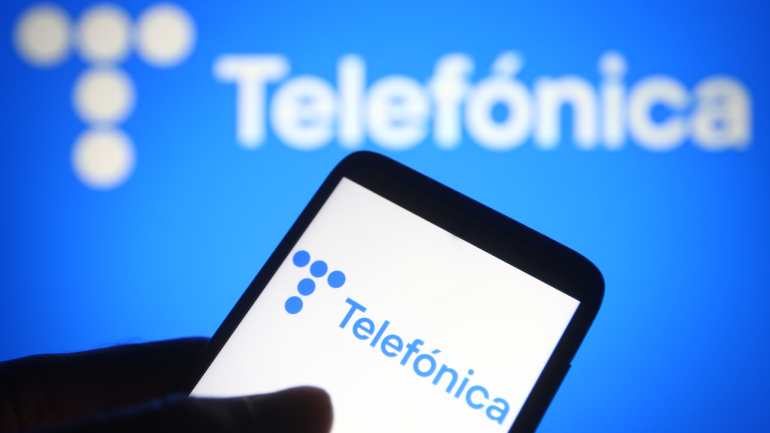Telstra to decommission over 160 5G sites More than 160 5G mobile infrastructure facilities will be shut down by Telstra. The local competition authority expressed worries that the installations were set up to obstruct and stop Optus, a competitor carrier, from deploying 5G services. Months after The Australian Financial Review revealed that Optus had complained to the Australian Competition and Consumer Commission (ACCC) about the sites, Telstra has accepted an enforceable promise to deregister them. Using the mostly untapped 900 MHz range, Telstra is said to have registered 315 new sites in January, mainly in major cities and rural regions. Read more at: https://tinyurl.com/2pnvk38t KDDI to compensate consumers for network outages A month ago, KDDI had its worst network outage ever, rendering voice and internet services unavailable to millions of Japanese consumers for nearly the entire weekend. KDDI statistics show that the outage prevented more than 7.65 million users from…
Singtel has announced an additional US$100 million investment in Singtel Innov8, its corporate venture arm, in order to cultivate businesses with technology matched with the telco’s own priorities. The funds will also diversify their investments across regional and global markets. The most recent cash infusion brings the Singapore carrier’s total investment in Innov8, which was founded in 2010, to $350 million. According to a statement released by Singtel on Tuesday, the VC arm has since invested in more than 95 companies, and has enjoyed 35 exits, four of which were unicorns. Innov8 made investments in companies that match the group’s commercial interests, which include 5G, artificial intelligence (AI), sustainability, cybersecurity, the digital economy, and other cutting-edge technologies. The company uses an evergreen fund model of operation, reinvesting profits from portfolio sales into new assets. With this additional funding, Innov8 will diversify its investment portfolio even more, adding ventures…
Umbrellar, a Microsoft cloud solutions company that delivers cloud managed services, migration, consulting services and cloud procurement for over 1,000 New Zealand enterprises, has been bought by Pax8, a cloud commerce platform. With access to a variety of technological know-how and professional services from Umbrellar, Pax8’s partners are now better positioned to drive local and global digital transformation. According to Pax8, the firm is thrilled to welcome new employees from Umbrellar who offer expertise and skills that will support projects and services for digital transformation in Aotearoa and across the world. Chris Sharp, SVP at Pax8 Asia commented: “The team at Umbrellar are experts in cloud-enabling businesses in New Zealand, and they are the number one service provider of Microsoft cloud in the market. With a focus on infrastructure managed services, assessment, migration, and optimization, their technical expertise and award-winning professional services will prove to be a value-add…
‘Vodafone Business UC with RingCentral’ has been introduced to the German market by Vodafone Germany and RingCentral, a supplier of worldwide business cloud communications. The newly released Unified Communications (UC) platform combines RingCentral’s flagship offering, RingCentral Message Video Phone™ (MVP™), with Vodafone’s mobility and 5G technology. Businesses now have another compelling option to migrate from their current infrastructure to the cloud thanks to this new unified communications solution. Vodafone Business UC with RingCentral enables staff to work from anywhere by providing a single app for team messaging, video meetings and a cloud phone system, and it provides a flexible yet dependable solution to handle the complexities of everyday work. In order to make communication and collaboration easier, this highly secure system offers call recording, HD video meetings, and many other new features. End users will also benefit from the numerous distinctive features, such as the AI-based Advanced Meeting…
Rogers apologizes for the massive service outage Rogers, a Canadian telecommunications company, experienced a widespread outage earlier this month and is now under pressure to guarantee that this does not happen again. The most damaging effect of the outage was how it disrupted crucial communications, and the Canadian government has declared that it now wants all national carriers to find a way of helping each other in such worst-case situations. Rogers has committed to investing at least CA$250 million to physically isolate its wireless and internet networks so as to add an extra layer of stability. There is also a promise to spend CA$10 billion over the next three years to extend and improve Rogers’ network. Read more at: https://tinyurl.com/35dxbj4d Nokia and CityFibre sign a 10-year broadband equipment agreement A 10-year contract for XGS-PON broadband equipment with CityFibre has been announced by Nokia. This arrangement covers the purchase of access…
Theta Lake, a provider of contemporary communication compliance and security solutions, and Movius, a provider of work-from-anywhere solutions for mobile voice, text and WhatsApp, have formed a partnership to help heavily regulated industry sectors scale secure and compliant mobile communications effectively and increase productivity levels. The combined solution of Movius and Theta Lake offers sophisticated mobile voice and messaging features, as well as integrated compliance capture, archiving and monitoring, all in a single, non-disruptive system that includes voice and electronic communications. Movius’ MultiLine technology provides a second, dedicated business line to any cellular device, allowing customers to securely divide their professional and personal communications while using a single device. The Movius AI-powered program also connects with major messaging applications such as WhatsApp, WeChat and Microsoft Teams, as well as prominent CRM platforms such as Salesforce. Theta Lake provides a cloud-first solution to facilitate archiving, securit, and compliance…
RingCentral, a global provider of business cloud communications, video meetings, collaboration and contact center solutions, has announced an extension of its hardware ecosystem as well as new RingCentral Rooms feature updates. Organizations may use RingCentral Rooms to turn their meeting locations into dynamically enabled video conferencing destinations. Customers may now choose from a number of additional hardware partners to equip their conference rooms with high-quality, intelligent audio and video, as well as a whiteboard, allowing meeting attendees to better interact while also being seen and heard. RingCentral is collaborating with three more hardware suppliers to satisfy the ever-increasing market demands for conferencing services. New partnerships with Avocor, Jabra and EPOS provide the company users more options and new features that improve the meeting room experience for improved interaction and smoother collaboration. “Strong relationships with strategic hardware partners are important as we strive to address the complex challenges…
Spain’s Telefónica has announced that it will sell a portion of its rural fiber network to a group led by France’s Credit Agricole and Vauban for roughly 1 billion euros. According to a statement released by Telefónica, the financial group and the investment firm will buy a 45 percent stake in Bluevia, a provider of rural fiber, with a total valuation of 2.5 billion euros. Telefónica also stated that it anticipates the deal to be finalized by year’s end, subject to regulatory approvals. Bluevia is a platform for managing and deploying fiber networks in underserved rural parts of Spain in collaboration with networks administered by third-party operators. The transaction takes place less than a month after Telefónica established their dedicated neutral wholesale FTTH provider, which is primarily focused on connecting areas comprising Spain’s lowest population densities. As a neutral wholesaler, Bluevia will establish a fiber network in…
Google and Oracle experience data center outages due to UK heatwave Following a record-breaking heat wave that blasted Britain on Tuesday, data centers used by Google and Oracle Corp. have both failed. Both businesses attributed the disruptions to “cooling systems” issues. Both Google and Oracle have shut down equipment, causing interruptions to their cloud services, in order to prevent irreparable damage to physical components and thereby creating a lengthy outage. On Tuesday, when the outages started to spread through London, temperatures in the UK reached 40 degrees Celsius (104 degrees Fahrenheit). Read more at: https://tinyurl.com/3t2xm2a5 FBI and Verizon Network enter $400 million contract Verizon and the FBI have signed a new $400 million deal, with the telecoms giant assisting to increase the data bandwidth for the law enforcement organization. New features include a worldwide Virtual Private Network and faster data transmission rates using 4G and 5G wireless connectivity within the…
The cloud communications platform from Alianza has been chosen by Schurz Communications, a provider of cloud services and broadband media, to offer its Antietam Broadband and Orbitel customers brand-new, cutting-edge, high-margin unified communication (UC) services and increase its addressable market. Schurz will be able to unlock and produce additional income from its current broadband services client base with the help of Alianza’s Business Cloud Communications (BCC) and Business Text Messaging (BTM) solutions, all while streamlining its back-end processes. Schurz sought a simple-to-deploy and maintain solution that would allow the company to rapidly extend and modify its service offerings in response to its customers’ rising demand for voice-first UC services, and their need to get such services from a reliable broadband provider. Customers of Schurz will be able to communicate, meet, and share across all of their devices thanks to Alianzas powerful, adaptable, all-in-one Business Cloud Communications solution.…













